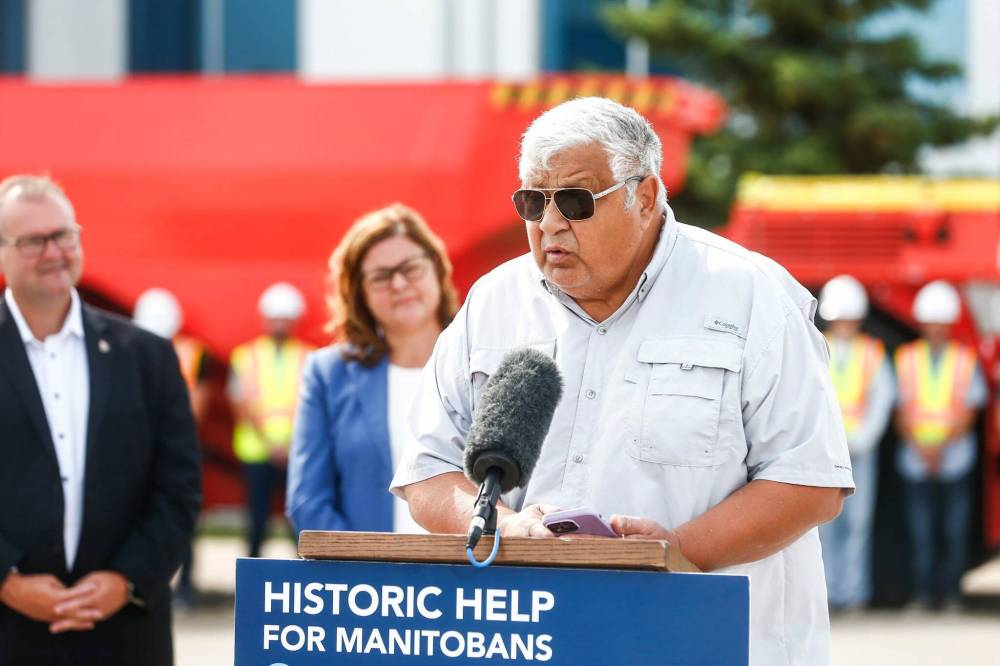Province funds NeeStaNan feasibility study
Advertisement
Read this article for free:
or
Already have an account? Log in here »
We need your support!
Local journalism needs your support!
As we navigate through unprecedented times, our journalists are working harder than ever to bring you the latest local updates to keep you safe and informed.
Now, more than ever, we need your support.
Starting at $15.99 plus taxes every four weeks you can access your Brandon Sun online and full access to all content as it appears on our website.
Subscribe Nowor call circulation directly at (204) 727-0527.
Your pledge helps to ensure we provide the news that matters most to your community!
To continue reading, please subscribe:
Add Brandon Sun access to your Free Press subscription for only an additional
$1 for the first 4 weeks*
*Your next subscription payment will increase by $1.00 and you will be charged $20.00 plus GST for four weeks. After four weeks, your payment will increase to $24.00 plus GST every four weeks.
Read unlimited articles for free today:
or
Already have an account? Log in here »
Hey there, time traveller!
This article was published 04/08/2023 (873 days ago), so information in it may no longer be current.
The Manitoba government is contributing $6.7 million to a feasibility study for the NeeStaNan Utility Corridor project, an Indigenous-led resource initiative that involves Gambler First Nation.
The corridor, if built, provides rail transportation that would allow commodities such as potash to be shipped out to international markets through the northern community of Port Nelson, located on the shores of Hudson Bay.
This is a significant alternative to the current method of transporting Prairie-produced commodities like potash, wheat and bitumen out through Vancouver, B.C., which is a considerably longer route and involves a much busier port.

Gambler First Nation Chief David LeDoux speaks at the province’s Critical Minerals Strategy announcement in Winnipeg on July 25. The province announced on Monday that it is contributing $6.7 million to a feasibility study for the NeeStaNan Utility Corridor project, an Indigenous-led resource initiative that involves Gambler. (File)
The total cost of the NeeStaNan feasibility study is $26.6 million, with the Manitoba government providing $6.7 million over two years, contingent on funding participation from the governments of Alberta and Saskatchewan, as well as First Nations communities.
In Thursday’s news release announcing this provincial funding, Chief David LeDoux said the people of Gambler First Nation are looking forward to being founding members of the NeeStaNan Corridor.
In June, the province’s very first potash mine, run by the Potash and Agri Development Corporation of Manitoba (PADCOM), began preliminary production in the hamlet of Harrowby, which is located roughly 15 kilometres west of Russell.
Since Gambler is a 20 per cent equity partner in this operation, LeDoux was all smiles during this grand opening ceremony, stating the mine will open up new economic opportunities for his community and other First Nations throughout Manitoba.
“I’ve heard quite a bit about how we’re a ‘have-not’ province, but I think that’s going to change pretty quick,” he said on June 9.
During this grand opening ceremony, PADCOM president Daymon Guillas told the Sun he’s hoping they can find a more efficient way to ship their locally produced potash internationally.
On Monday, Guillas told the Sun over the phone that he’s happy the province is standing behind the NeeStaNan Corridor by funding the feasibility study, since this project will provide PADCOM with a major trade advantage if approved.
“It gives us access to half the world from a port within Manitoba. It’s a game-changer for Manitoba when it comes to potash and other exports,” he said. “I’m really proud of Manitoba for taking leadership on it.”
Last week, the province announced that it would be earmarking a $1.03-million loan from the Communities Economic Development Fund to help the PADCOM work toward a net-zero emissions target.
On top of that, the province has granted PADCOM the right to explore for potash on Crown land adjacent to the mine site.
“Access to explore more of the potash resource, in partnership with Gambler First Nation, will allow us to evolve from pilot stage to commercial production, including more investment in mining activity and logistics to get Manitoba potash to the world and this will benefit all Manitobans,” Guillas said in a news release.
While PADCOM is still in the preliminary stages of its potash production, Guillas believes the facility could be producing 100,000 tonnes a year once they are fully operational.
Canada is currently the world’s largest producer of potash, which can be used as an effective fertilizer and as the key component in many industrial compounds.
» The Brandon Sun
